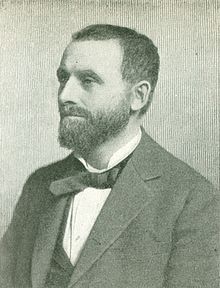
German-American Day is observed annually in the United States on October 6. The holiday celebrates German American heritage, commemorating the date in 1683 when 13 German families from Krefeld landed in Philadelphia. These families subsequently founded Germantown, Penn., the first German settlement in the original 13 colonies.
Originally known as”German Day,” the holiday was celebrated for the first time in Philadelphia in 1883, on the 200th anniversary of the arrival of the Krefeld settlers. Similar celebrations developed later in other parts of the country.The custom died out during World War I as a result of anti-German sentiment, but was revived in 1983.
In 1983, President Ronald Reagan proclaimed October 6 as German-American Day to celebrate and honor the 300th anniversary of German American immigration. In 1987 Congress designated October 6, as German-American Day, calling on Americans to observe the day with appropriate ceremonies and activities.
Beyond beerhalls and bratwurst
There is much to German-American culture in America that goes beyond beerhalls and bratwurst.
The first important ethnic socialist group in the U.S., German Americans established institutions and a political-cultural perspective that set the pattern for most immigrant groups until the 1920s and even later. Arriving in several large waves of immigration from the 1830s to the 1890s, reaching a peak of a quarter-million in 1882 alone, Germans became America’s largest single immigrant group and differed in important respects from most others.
First, they came from a political culture that could not truly be called an oppressed nationality. German working-class immigrants, however personally impoverished, carried their particular, highly developed socialist heritage proudly. German-American socialist ranks were fortified especially with immigrants fleeing from Europe in the wake of the revolutions of 1848-49.
Second, Germans brought skills and traditions of industrial organization that enabled them to take a leading role in American craft unions, labor-related social institutions, and the fledgling labor movement, far out of proportion to their percentage in the population. Not only unions, but newspapers, meeting halls, public labor forums, sports clubs, and a variety of other socialist-labor groups bore their stamp.
Third, as to timing, German-American socialists moved into the forefront as the older “natural rights” radicalism, such as the Civil War crusade to abolish slavery, ran aground on the increasing division of social classes. German-Americans established the first Communist Club, some of them having personally known Marx; they outnumbered all others in the American wing of the First International, and volunteered enthusiastically to defend the Union side in the Civil War. They remained a constant socialist presence as native-born socialist movements waxed and waned erratically during the 19th century.
German-American working-class households remained stable in class and political outlook for generations. In a few places, notably Milwaukee, their numbers and their dedication created a municipal socialist experiment under socialist mayors that achieved long-lasting results. In Chicago, it was largely the movement of German-American socialists and anarchists that propelled the movement for the eight-hour day. Many of the 1886 Haymarket labor martyrs were German.
The movement built a broad readership for its newspapers in a half-dozen cities, and an audience for socialist theater and choral groups, modeled mainly on the vibrant socialist institutions back in Germany. These lasted well into the old age of the immigrant generation, fading out only with the Americanization of their native-born children and with anti-German feelings around World War I.
Several intellectuals emerged from the German-American socialist community, such as Adolf Douai, editor of an abolitionist paper in Texas and a writer of several American travelogues for German readers; August Otto-Walser, a playwright and fiction writer inspired by German Social Democracy, who edited American socialist newspapers in several cities; Joseph Dietzgen, an independent discoverer of historical materialist principles; Paul Grottkau, a labor leader in Berlin who became an anarchist-leaning editor in Chicago and Milwaukee.
German-Americans also encouraged and mentored new communities of Czechs, Hungarians, and Finns, as well as Jews who spoke the Germanic Yiddish language, in their ethnic press and likewise in English.
A very few of the many other prominent German-Americans include John Peter Zenger, Carl Schurz, Felix Adler, Emile Berliner, Joseph Pulitzer, John Peter Altgeld (progressive Illinois governor who pardoned the remaining Haymarket prisoners), Maximilian Berlitz, Kurt Weill, and Albert Einstein.
In a later phase, a new wave of Germans fleeing from Nazi repression helped to strengthen the American anti-fascist movement. The motion picture industry and the field of classical music were both especially invigorated by émigré artists and intellectuals. Many of these new German-Americans joined the U.S. military in World War II to liberate their homeland. In the post-World War II years, an important body of German immigrants sustained the American campaign to recognize the German Democratic Republic diplomatically and support the first socialist state established on German soil.
Adapted from Wikipedia; Paul Buhle, “German Americans,” in the Encyclopedia of the American Left, 2nd edition, with permission; and other sources.
Photo: Wikimedia (CC)












Comments